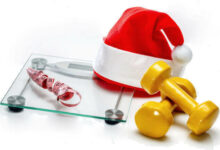- Selection criteria
- General recommendations
- By sport
- Gender-related features
- Rating of the best
For most people, fitness is associated with dance aerobics, which is designed exclusively for women. However, this term in fact encompasses a much broader concept, including any athletic activity that takes place in specially equipped gyms. Choosing the right footwear is essential to getting the most out of your fitness classes—allowing you to burn maximum calories without risking injury.
As it turns out, the sneakers you wear for your morning jog aren’t right for the job—they’re too heavy. Even high-end sneakers that look great with jeans when you’re out and about won’t do the trick either. So how do you choose fitness sneakers that are both comfortable and functional? As it turns out, it’s an art form all its own.
Selection criteria

Before you head to the sporting goods store to make your long-awaited purchase, you need to think ahead about what exactly you’re going to be looking for. What criteria should you use when choosing sneakers? They should be distinguished by the following characteristics.
- Foot fixation
Fitness classes involve a lot of movement. Your feet should feel as comfortable as possible during these movements and you shouldn’t have to worry about getting injured. Therefore, comfortable sneakers are those that will securely fix your feet in place. They should be higher than street models and have a tall back. This is the only way they can properly support your ankles and minimize the risk of any injuries in the gym—like sprains or dislocations.
- Laces
Continuing on the theme of foot fixation, it’s worth choosing models with laces, as they are considered to be the most reliable in this regard. Velcro and other types of fasteners will cause you a lot of inconvenience. Flat laces hold knots better. Make sure they don’t cut into your feet, as this will interfere with blood circulation.
- Ventilation
Your feet should be able to breathe in fitness sneakers, so pay attention to whether air will be able to reach them during exercise. For example, many brands offer shoes with circular foot ventilation—this is an expensive but ideal option. The material of the sneakers is also important in this regard: it should be natural and not create a greenhouse effect. It can be leather, gore-tex (an innovative material developed in recent years), or synthetic mesh.
- Cushioning
The cushioning system in sneakers reduces the load on your feet and minimizes the risk of injury. This can take the form of micropores, air cushions, or an intermediate sole. Be especially careful with the latter. It can be made of either polyurethane or ethylene vinyl acetate. The first is durable, but it’s too heavy for fitness activities in the gym. The second, on the other hand, is too light and won’t last very long. You need to be careful when exercising in these types of shoes.
- Sole
The sole should be durable, multi-layered, and made from different materials. This design increases wear resistance. The toe is equipped with a rim for easy execution of rotational movements. Try to bend the sole of the model you like: you should be able to do so easily, and when it returns to its original state, there shouldn’t be any dents or cracks.
- Insoles
The insoles should be removable so that you can replace them with another pair while these are being washed and dried. They should fit your foot completely. In the center—a thickening that supports the arch of the foot. Make sure there is no fabric or cardboard insert under the insole—it accumulates moisture and causes sweating. Instead, look for even seams there to ensure comfortable exercise.
Knowing in advance which fitness sneakers to choose, you will feel more confident in the store among the wide range of models offered. According to these criteria, you can immediately put aside unsuitable options, and evaluate the remaining ones from the point of view of your physical characteristics (size, foot structure) and individual preferences (color, brands, style).
Gore-tex. Recently, Gore-tex fabric has been increasingly used in the production of sneakers—two- or three-layer: made of outer and inner fabric, with a Teflon membrane as a gasket between them. Its main quality is wear resistance.
General recommendations

In addition to the selection criteria, it’s worth remembering a few more important recommendations.
- If you have flat feet, it’s better to do fitness in sneakers with a supinator and orthopedic insoles.
- If you have problems with being overweight, purchase shoes with maximum cushioning.
- Before going to the store, find the corresponding rating of the best and most comfortable fitness sneakers. Define a couple of positions for yourself, study reviews on them, find out their distinctive features. This will help you more clearly imagine your future purchase.
- It’s recommended to buy shoes in the evening, when your feet are slightly swollen.
- When trying on, the sneakers should fit in size—no chafing, no pressure, no dangling.
- Ideally, you need to buy 2-3 pairs at once for fitness in the gym. They need to be changed depending on the actions performed right during the workout. For example, it’s advisable to work out weightlifting exercises in weightlifting shoes, WOD (“Workout of the day”)—in shoes for cross-training.
Micropore. This is a rubber that is used to make the soles of many sneakers. It is good because it is very elastic.
By sport
In addition to general points and recommendations, you can always delve into the essence of the issue in more detail. There is an opinion that for fitness in a certain direction, different models are needed. Indeed, the one in which it is convenient to jump rope will not be entirely successful for CrossFit or squats in the simulator. Therefore, if you want to get the most out of your workouts and not get injured, consider this point too.
For the treadmill:
- Sole made of micropore—solid and flexible;
- Gel inserts in the sole are possible;
- Supinators are required;
- Tread protectors are shallow;
- With excess weight and flat feet, a stabilizer is needed—a rigid insert on the outer sole that correctly distributes body weight;
- Top—mesh, which allows air to pass through well;
- Minimum of seams (they only rub blisters);
- Lightness (up to 350 gr).
Related article: “How to Choose Sneakers for a Treadmill”.
For strength exercises:
- Corrugated sole made of micropores, preventing slipping and providing a clear fixation of the foot on the floor;
- The width of the heel on the sole is greater than the width of the toe for maximum stability;
- The frame in the heel area is strong and rigid;
- Lacing—tight, with a tight fit to the foot;
- The back of the sole is slightly raised for better cushioning;
- The maximum density of the sole correctly distributes the load on the musculoskeletal system.
Recommended types:
- Weightlifting shoes—Adidas AdiPower with a polymer sole, heavy Nike Romaleos or flexible Inov-8 Fastlift 335;
- Minimalistic—with Vibram Five Fingers toes separated into fingers, narrow Nike Free Hyperfeel, wide Altra Samson;
- Sneakers.
Click to rate this post!


